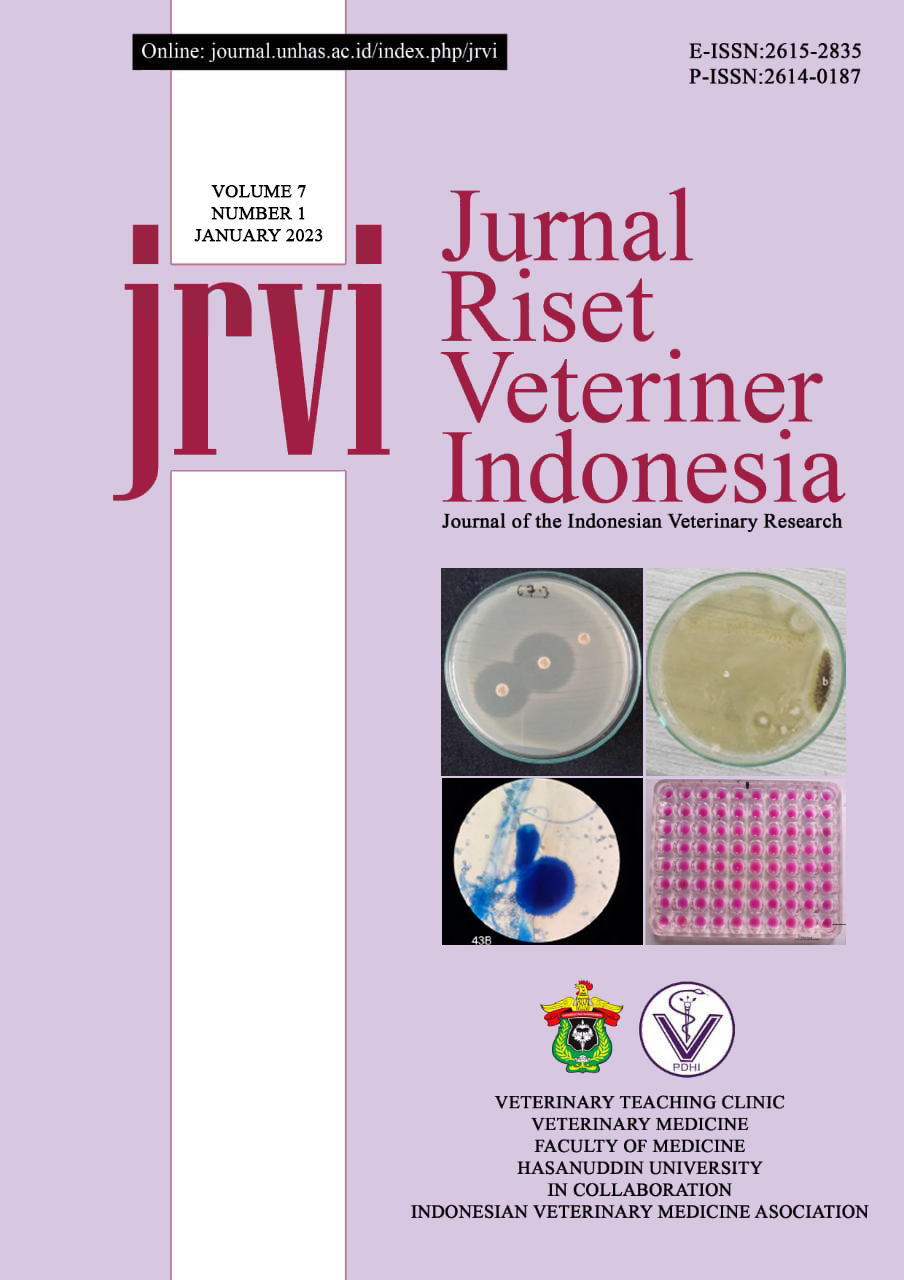Abstract
Aspergillus sp are fungi that commonly caused a systemic respiratory infection in Human and Dog. In Bali, most of the dog are free-roaming dogs, and has poor skin health condition. Some of them are suspected with fungal infection. Aspergillus sp has high risk to infect the dog, because they are available everywhere in environment. Therefore, this research is conducted for adding primary data of Aspergillus sp isolated from dog’s skin and their prevalence. The samples are 15 free-roaming Bali dogs with suspected fungal infection. Identification was carried out by using microscopic and macroscopic observation methods, skin swab was taken from the dog’s skin using the Mackenzie method, and the sterile toothbrush swab gently from the dog’s skin to the Sabouraud Dextrose Agar (SDA) media. The fungi were cultured on SDA media for macroscopic identification for approximately 3-4 days, mostly to observe how the fungal colony grew and its color. Microscopic identification are using adhesive tape, the tape was gently pressed into the fungal colony, the tape was stuck into the surface of object-glass with 3-4 drops of Methylene Blue staining, and the object glass was examined by using a light microscope, the findings of Aspergillus sp fungi are recorded and the data are descriptively presented. The result shows that most Aspergillus species that were found is Aspergillus fumigatus and Aspergillus niger according to their colonies growth and microscopic appearance, and the prevalence from 15 samples were 53.33%.
Keywords: Aspergillus sp, fungi, Bali Dogs, Identification, Prevalence

This work is licensed under a Creative Commons Attribution-NonCommercial 4.0 International License.

